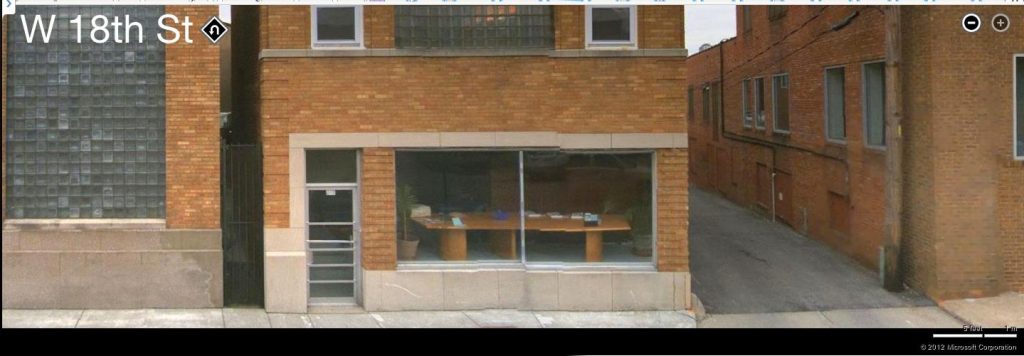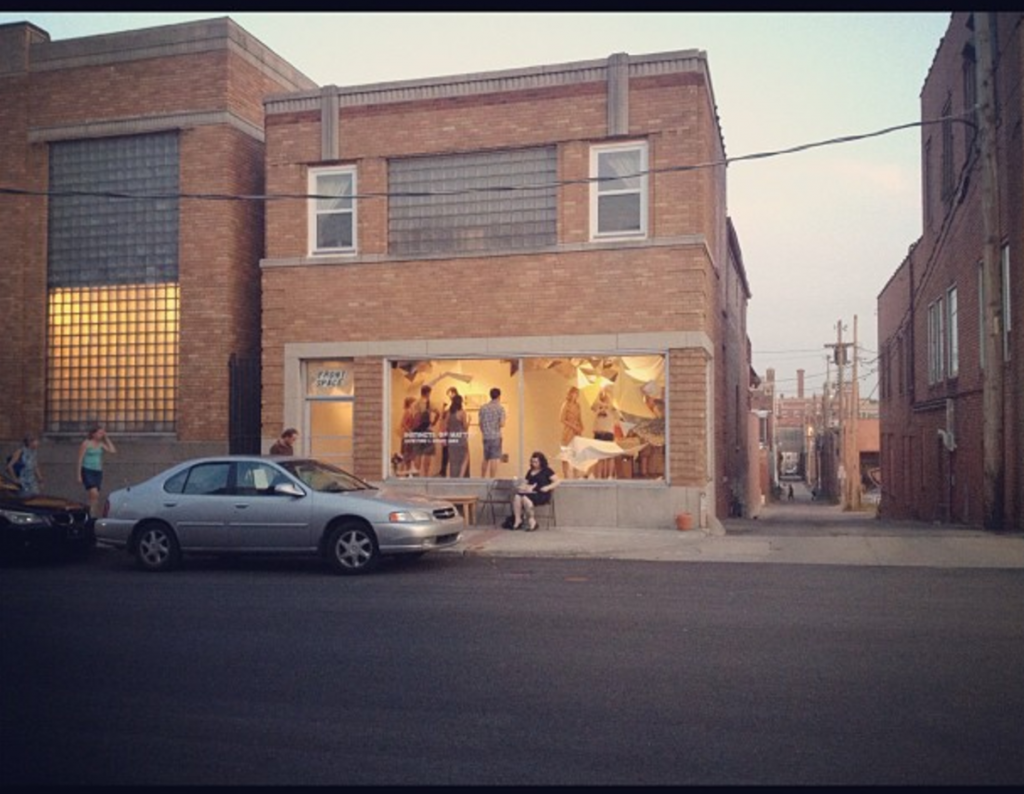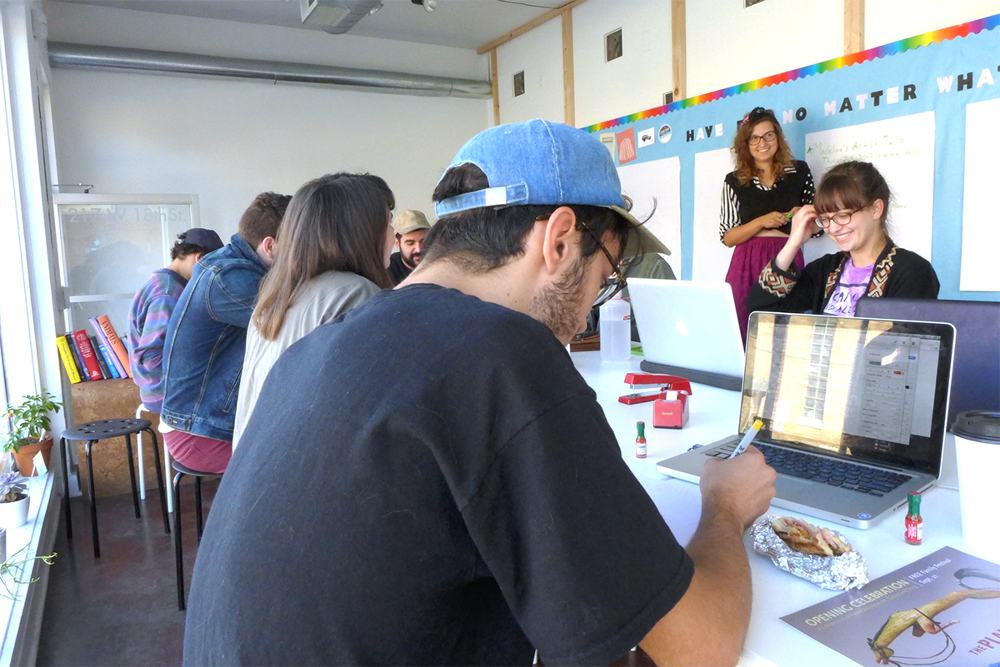Category: Program Report
PSST: Yaelle S. Amir
Text by Portland State Social Practice Talks

Continuing our series on mass incarceration in the United States, we are joined by curator Yaelle S. Amir of Newspace Center for Photography. She talks about the exhibition Prison Obscura which was on view at Newspace from April 1st-May 28th 2016. The exhibition, curated by Pete Brook, examines the imagery surrounding prisons both from inside and outside the walls.
You can listen to the entire podcast here.
Yaelle S. Amir has worked as a curator and researcher for over a decade, focusing primarily on socially-engaged photography, video, and installation with an emphasis on community engagement. She has held curatorial and research positions at several institutions including the International Center of Photography, Museum of Modern Art, and New York University’s Institute of Fine Arts. She has curated exhibitions at Artists Space, CUE Art Foundation, Center for Book Arts, Elizabeth Foundation for the Arts, Franklin Street Works, ISE Cultural Foundation, Marginal Utility, and the Wallach Art Gallery at Columbia University, among others. Yaelle is the recipient of several curatorial fellowships and awards by national organizations from The Luminary and Paul Artspace in St. Louis, to BRIC Media and the Art & Law Program in New York. At Newspace, Yaelle manages exhibitions, lectures, and public programs.
PSST: Sherrill Roland
Text by Portland State Social Practice Talks
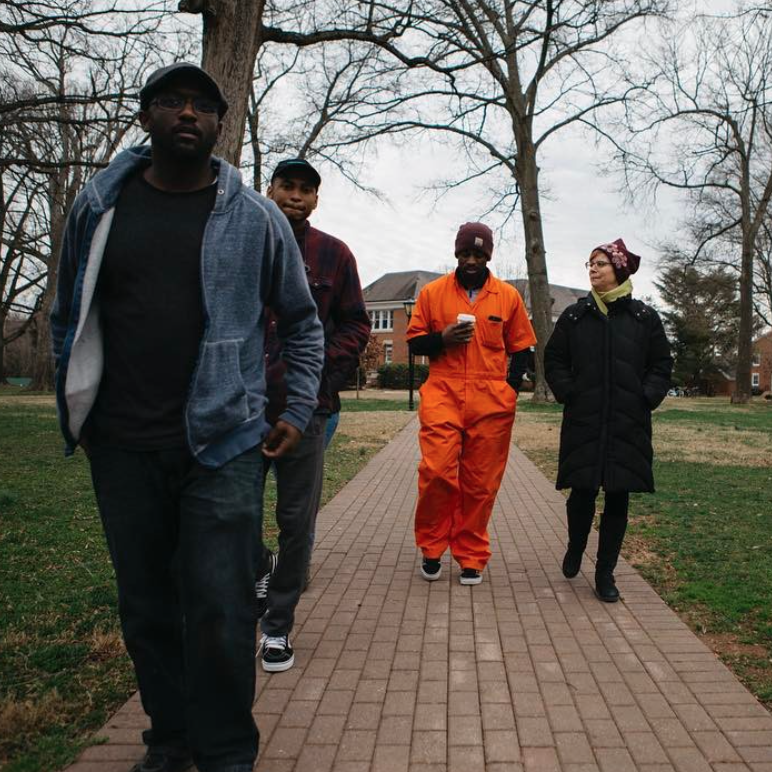
SEASON 2: Mass Incarceration
For its second season of public conversations, the Portland State Social Practice Talks public conversation series has focused on various aspects of the prison-industrial complex in the United States. These talks have ranged from artists to reform advocates, playwrights to curators, all engaging with, challenging, and questioning the role of prisons in our society. The conversations serve as a form of public research in relation to an ongoing project at the Columbia River Correctional Institution. The goal is learning how different people approach contact with the corrections system, and the potential role of art in this context. The conversations were held publicly at the Portland Institute for Contemporary Art.
This week we are joined by Sherrill Roland. The full conversation can be heard here.
Sherrill Roland is a returning student entering his thesis and final year of my Master’s in Fine Arts at UNCG. He started a few years ago before his world turned upside down. In October 2013, Sherrill went to trial and subsequently lost, and 11 months later he was released from state prison in Washington, DC. Almost a year and a half after being released, he was exonerated of all charges and granted a bill of innocence.
The Jumpsuit Project is a socially engaged art project conducted at UNCG during the 2016-17 academic year to raise awareness about issues relating to incarceration.
Program Report: Front/Space
Text by Madeline Gallucci
Origins and Operations: How Front/Space emerged from DIY to DI(WE)
Stepping in as co-director of Front/Space, nearly two and a half years ago, I wouldn’t have believed where we are now, what we have accomplished and what we have yet to do. Alternative and DIY spaces are a necessity to the complexity of the cultural landscape, they are safe havens for risk taking and interdisciplinary practices that do not rely on institutional critique, commercial constructs or business practices. They attempt to reimagine and redefine space and often go unnoticed by the general public.
When I speak about Front/Space I strive to speak to these ideas as it emerged from the perfect combination of opportunity of space and cheap rent that draws many artists to Kansas City. In 2010, it is was founded by a rotating crew of residents and volunteers who came back to the city after college to discover many changes and development in the Crossroads Arts District. Previously a law office, they rented a building that conveniently contained a storefront window that was big enough to exhibit solo work, a collaborative project or host an intimate performance. Steadily, Front/Space grew as a collaborative effort with each resident and volunteer contributing to multiple facets of the project. They began showing work generated by friends, colleagues, architects, writers, and civic media makers, contributing to the built-in audience of First Friday – a monthly gallery crawl that many cities from across the country have adopted.
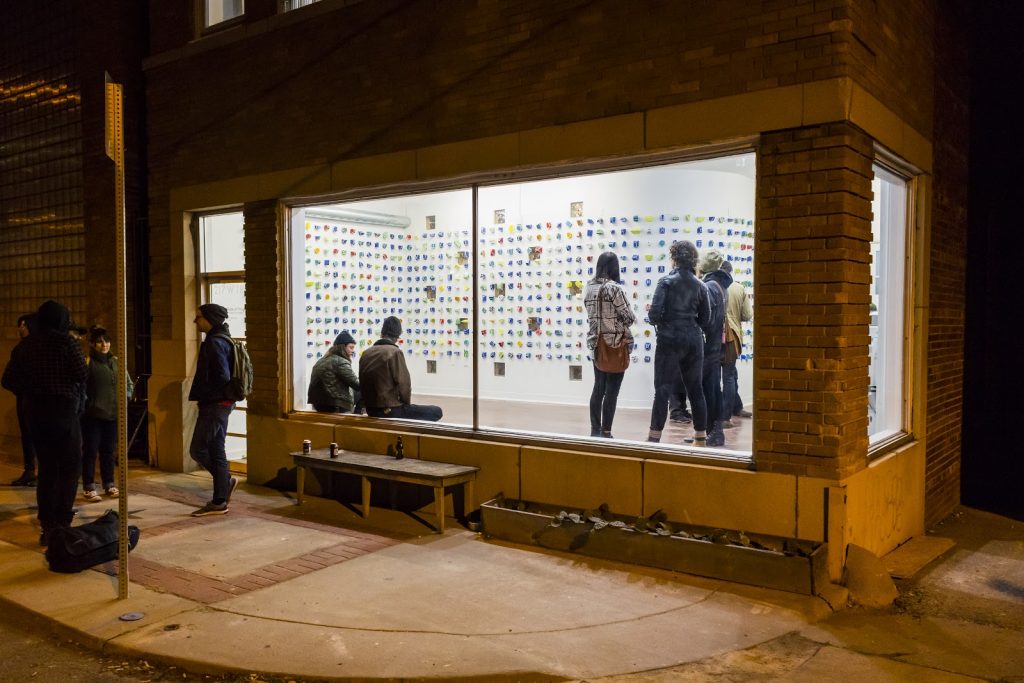
Front/Space at night with February 2017 exhibition The Shape of Things by Kayla Mattes and Justin Seibert. Photo by Timothy Amundson.
First Friday in Kansas City transforms the Crossroads Arts District from a bustling 9 to 5 neighborhood to a packed party extending a near 8 block radius. This type of density is rare, as people travel from midtown and the suburbs to participate in this event. Food trucks, vendors and performers line the streets while people pack into galleries to view art or scope out free booze.
In the early stages, Front/Space offered a different type of experience that subverted much of the spectacle that has become First Friday. Situated on the edge of the district, many people would walk past FS after parking their car, with a slight glance thinking “what is this?” Not conforming to the traditional “white cube”, Front/Space immediately attracted those who were curious, thoughtful and wanted to build a broader conversation about what was happening in the Kansas City art scene.
In 2014, after approximately 4 years of running the project completely out of pocket, Front/Space was unknowingly nominated and received a SEED Grant from the Robert Rauschenberg Foundation – three installments of $10,000 that were to span the course of three years. In this time, the directors Kent Szlauderbach, Leandra Burnett and Sarah Murphy were working on their capstone project Civilian, a publication showcasing the intersection between art and civics. With the end of this project in sight and other prospects and opportunities on the horizon, it was time for them to move on. This surprise grant was a turning point for the previous directors. Not only did it legitimize the work they were doing, but also confirmed their determination to not let Front/Space absorb back into the Crossroads once they left. It was then I was tapped to join Front/Space in fall of 2014.
Even with a background in event planning and arts administration I was a bit nervous to embark on a project that seemed to have an established presence as one of the only alternative/DIY spaces in the Crossroads. Front/Space had been a place of discovery for me, and I was drawn to its architectural charm and unassuming presence. As a visual artist with passions for community development, I saw potential for new projects and quickly began research on artists and cultural workers I wanted to highlight and engage. However, I soon realized that this was only one perspective. After exploring multiple options, I decided to ask Kendell Harbin to be my collaborator in this project. Kendell and I had many similarities that would set the stage for a healthy collaboration including that we both had our final projects as seniors at the Kansas City Art Institute at Front/Space. Though our respective shows were completely different in content and concept, we both had a shared love for this strange space as a way to challenge what was going on in the Crossroads.
Once I had courted Kendell into being my collaborator and with funding in place our next questions were: Where do we go from here? What work is compelling? How do we want to run our space?
The first idea for a program was centered on the simple concept of “work” and “working together.” Everyone brought a task, project, writing, whatever they were putting off or needed to complete and then we gathered in the storefront to complete the task together. Kendell and I provided a small resource library, tables, space and brought in collaborators to create activities to navigate mental blocks and participate in to-do list consultations. We felt that this first event really set the tone for how we wanted to run our space, where we were working side by side, sharing resources and stories, challenges and pipedreams. We saw Front/Space as a space that could be uniquely community driven, to shape the vision of what can be possible within these walls.
Now in 2017 and the wake of the contentious election and in the face of a new administration, this concept of “work” has begun to resonate even more passionately. We have so much work to do and it is together that we make this work stronger. Moving forward, we see Front/Space as the platform to engage new audiences and extend to new communities. Though this plan doesn’t necessarily have clear action steps, we can see that our small organization has already shaped and inspired new artist run spaces in Kansas City. We hope that this pooling of resources and information is the key to a great start.
A link to all past residents, co-directors and founders can be found here.

Kansas City Crossroads Arts District during a typical First Friday event. Image source: http://www.huffingtonpost.com/jason-grill/kansas-city-seeing-jump-i_b_9765348.html
Program Report: Greensboro Project Space
Text by Adam Carlin
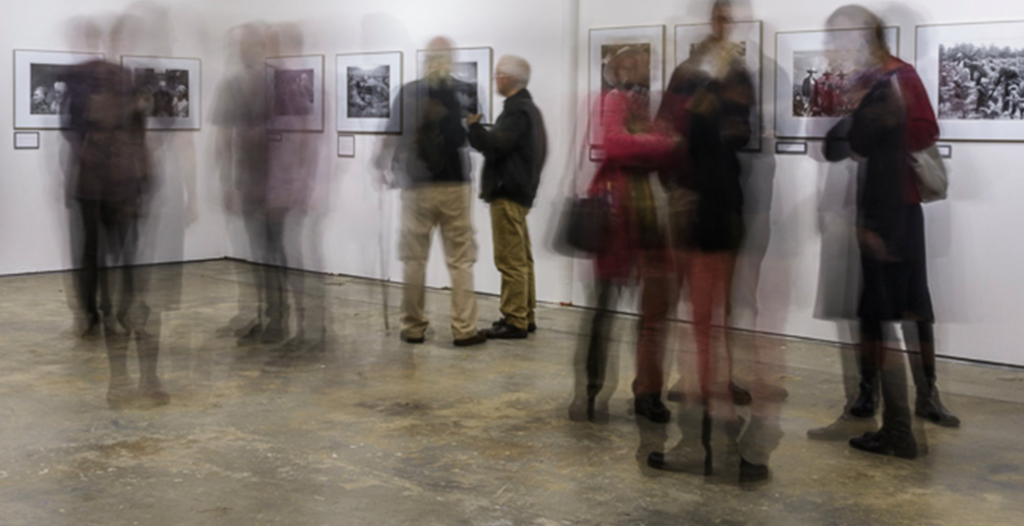
A Little Less Art
Today, the team at Greensboro Project Space (GPS) sat around our reception desk researching the logistics of breaking a Guinness world record. Let’s back up a second. Greensboro, NC is a small town. As a curator from big cities, my perception of public programs had to switch to not only what kinds of experiences to make for the public, but how I can build into them a mechanism to attract the public. The usual social practice and curatorial tools I use just weren’t enough.
Typically the goal was to create projects that are engaging, and offer new experiences that break through the monotony of the everyday. I say engaging often enough that sometimes I need to stop and examine what it means to me. Engaging for me means a sort of mental or physical investment in a project. It could be a good investment (good engagement) or bad investment (bad engagement) but nevertheless, an investment (engagement). This means that the public can participate in the project, or be responsible for creating the project of their own volition. At a base level, this is still my primary methodology, but the thing that is missing only revealed itself as I tried to fit the same projects into a different context. I can easily generate engaging scenarios, but how do I convince people that they need it?
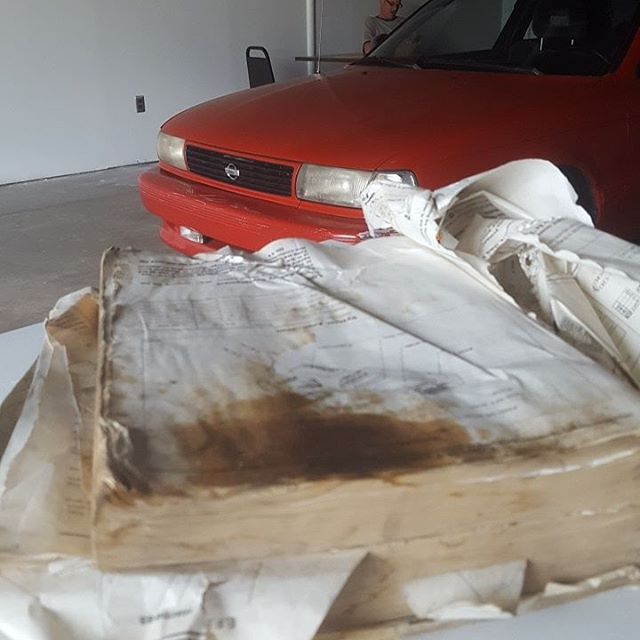
The thing that has struck me the most is that considering the rallying of individuals for a project, greatly effects the project itself. I’ve found that this new element brings in a necessity that is sometimes overlooked. I make work for people, and I often take for granted that people are sitting around waiting for me to bring them something to digest. Our big idea is to not only create experiences designed for people, but to make projects that act as a resource. This resource doesn’t only act as way to bring people into the space, but can be a creative apparatus to construct new and exciting projects. It could be simple. In our latest exhibition about incarceration, we handed out free honeybuns to anyone who came into the space. Honeybuns act as a form of currency in contemporary prisons and jails. Not only do we have a great conversation starter to expound the important data regarding the politics of incarceration, but we can feed people in our neighborhood who are hungry.
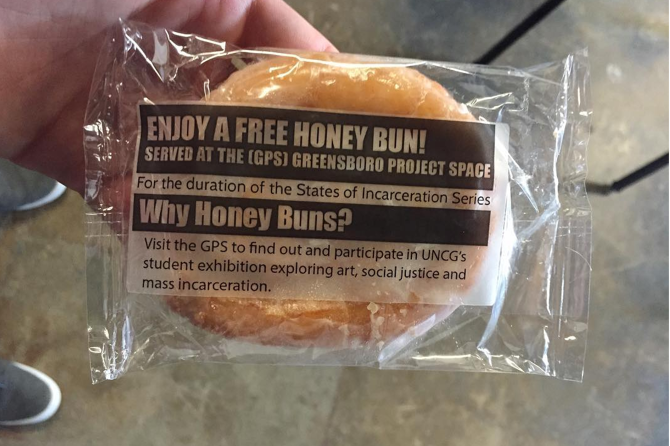
The Guinness Book of World Records investigation came from sitting around a reception desk with my team, acting as a think-tank trying to solve simple problems with big and creative ideas. The easy question we asked, is how do we get a huge amount of people to come into our space? The more nuanced form of the question is, how do we convince people that they belong in a space like this? We have found that the answer is to become a resource that stems from the specific needs of a community. Surprisingly, the resources that I have used to bring people in are not art most of the time. This isn’t intentional, but comes about through a realistic purvey of the needs of the people in Greensboro. Art can do a lot, but compared to the spectrums of wants and needs it seems to fall low on the list. I’d say, about 10% percent of people in Greensboro enter into art spaces (this data may or may not be sarcastic). Because we are an art space that focuses on social engagement, collaboration, and participation, this is an alarming realization. More and more we think that fitting into the categorization of ‘art’ is the corrupter that is making us work against our interests. Our goal now is to not figure out how to be different from a gallery, but how to remake ourselves continuously for the different needs of our communities.
Through breaking a Guinness record, we can turn GPS into a kitchen that is baking the world’s largest apple pie, a zoo that is inhabited by the most amount of people holding a ball python with one hand, a greenhouse where the biggest amount of people simultaneously work on a bonsai tree, and a variety of different spaces that acts as an exercise in impermanence. The next time we sit around the reception desk brainstorming the intricacies of community engagement, our first hurdle will be to achieve the unthinkable; purging the perception of GPS as a space to view art. Only then, can we be free to become whatever is necessary, and needed.
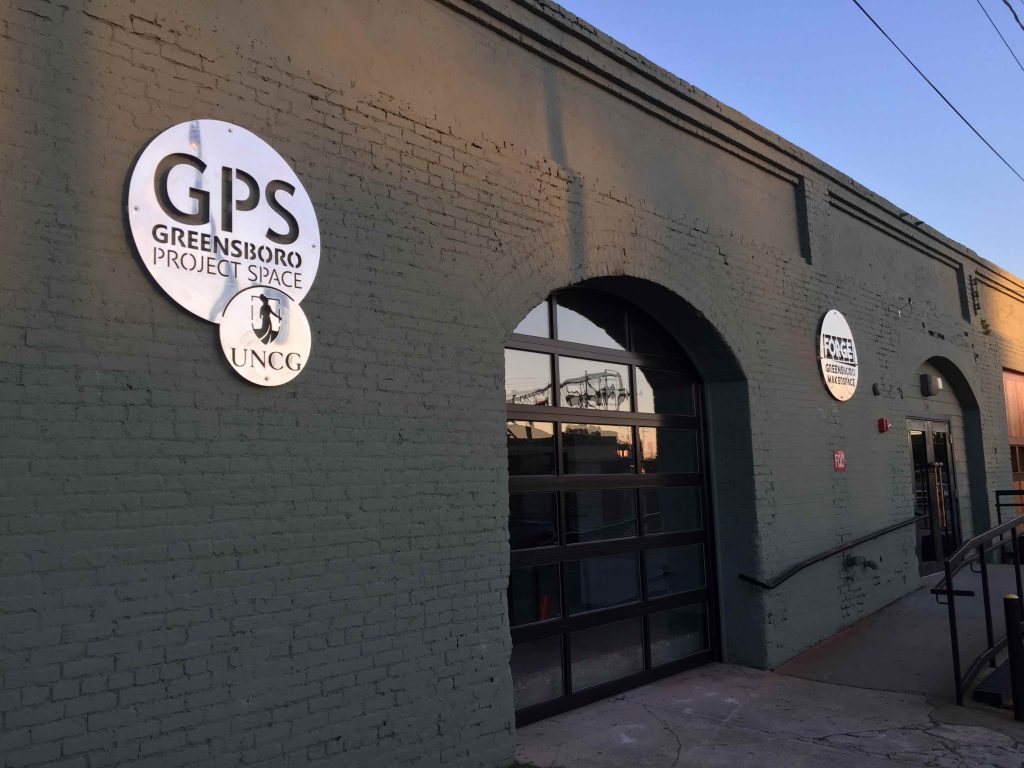
Program Report: Centre for Arts and Social Practice (CASP), India
Text by CASP

Photo: Derdh Guna Derdh / Community art project with rural migrants at Shankar Camp, New Delhi, 2015
The topic of sustainability has attracted much interest in recent times in the context of development discourses and policies. However, environmental, economic, and social sustainability has been discussed more than the cultural dimensions of sustainability where arts and aesthetics play a major role. Scholars now suggest that culture should be a core aspect of sustainable development and cultural producers and art institutions can embody values to create intergenerational equity and ethical perspectives of living in our world. While the term ‘culture’ is often debated, it must be understood as a ‘whole way of life’ and cultural strategies as modules for long-term sustainability of diverse communities, worldviews and practices.

Photo: Conversations Series | Public talk by the artist, Navjot Altaf, Pune, 2016
The idea of art as a ‘collaborative endeavor’ is embedded in its capacity to inculcate socially significant values of creativity, empathy and connections between humans, both tangible and intangible. Such collaboration and participation involves working with people from diverse backgrounds and fields beyond the elitist matrix of the art gallery or museum. Embedding cultural strategies within social contexts call for dialogues with citizens and communities and employing art as an agency of collective imagination. This also means research based modules to develop learning methodologies on sustainable thinking and practices essential for our contemporary world.
It is within these conceptual and contextual parameters that the Centre for Arts and Social Practice (CASP – India) was established in 2013. CASP is a transdisciplinary platform for national and international artists, writers, architects, social scientists and design engineers to facilitate critical dialogues on cultural sustainability. It aims to integrate research and practice through meaningful community initiatives and collaborative projects, fostering a relational engagement at both individual and institutional levels.

Photo: Community mural painting with art college students at Shukratal, Uttar Pradesh, India.
As a young organization, CASP supports research based artistic projects and community initiatives. It encourages collaborations between individual, institutions and communities. CASP generates dialogues around the rural-urban binaries to address the issues of habitat fragmentation, displacement and cultural degeneration due to urbanization.
A non-profit initiative, it works through four chapters in Navi Mumbai, Kolkata, Pune and New Delhi (India). Since its inception, CASP has facilitated around 25 programs/projects (workshops, conversations, community art initiatives, public art projects and social actions) with children, students, women, teachers, migrant communities, artists, filmmakers and socially engaged practitioners. It has generated dialogues in home-studios and public spaces, informal neighborhoods and a research centre, including an ongoing partnership with a local experimental art space.
Completed since 2013 | 4 chapters
- 8 Conversations Series | Kolkata and Pune
- 12 workshops | Navi Mumbai, Pune, and New Delhi
- 3 community art projects | Pune, Kolkata and New Delhi
- 2 public art installations/exhibition | Residency (Kushtia -Bangladesh) and Pune Biennale – India
- Citizen Design Lab | Urban terrace garden project (ongoing) – Navi Mumbai, India.
- 1 international collaborative project | Social Sculpture Research Unit (SSRU), Oxford Brookes University, UK.

Linear Extension | Workshop at New City Limits Collective, Belapur, Navi Mumbai, India, 2013

Workshop at Basti Vikas Kendra with children from urban village at Begumpur, Delhi, India, 2015.

Workshop at Basti Vikas Kendra with children from urban village at Begumpur, Delhi, India, 2015.

Workshop with Teachers from Zila Parishad schools (District schools) in Maharashtra, 2016.

Workshop with students from Municipal Corporation School in Pune, India, 2015.
Program Report
Text by Spencer Byrne-Seres
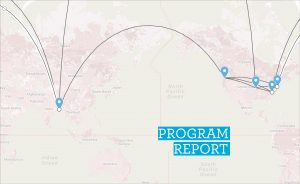
Program Report is a correspondence project that collects information and reflections on creating and sustaining spaces with a socially engaged focus. The project consists of monthly posts from a variety of spaces around the world that include meeting notes, artist interviews, reflections, project updates, and photograph. The project will take place over the course of 12 months, and include 4-6 spaces with different models but a shared interest or emphasis on socially engaged art. The goal is to foster dialogue and critical reflection on these efforts in a public format, and to build a written account of the challenges and considerations involved in creating alternative models for artists to work within.
Participating in the project are:
Greensboro Project Space is an art space created by the School of Art at the University of North Carolina Greensboro. One of the inspirations for Program Report was the GPS Correspondent project, that invited artists from around the world to become local correspondents for the space, reporting back on their activities and observations from the communities they are a part of. GPS produces a prolific number of projects and exhibitions, and has a specific focus on ‘creative, dynamic, and collaborative public programming.
Front/Space is a storefront project space in Kansas City that intends to ‘demonstrate the power of friendship, passion, ambition, and the beauty of living and working together through radical and interdisciplinary practices.’ Since 2010, Front/Space has been supporting artists from a wide range of disciplines, producing pop-up shops, alternative museums, and even a camera obscura. In addition Front/Space hosts a wide range of public programming from workshops to readings to lectures and more.
Centre for Art and Social Practice (CASP) is a collective of groups based in multiple cities in India that produce collaborative and socially engaged projects. Their focus is on ecology, society and culture, through transdisciplinary research, dialogic interventions, public lectures and workshops. In addition, member produce individual and collaborative projects throughout India.
We are excited for posts to start coming in in the first week of February. Check back then to learn more, and to read introductions from some of the participants.
PSST: Kirk Rea
Text by Portland State Social Practice Talks
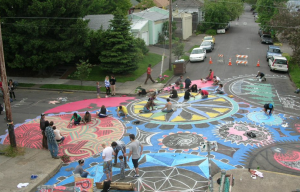
Artist and activist, Kirk Rea talks about his work with The City Repair Project, a Portland-based non-profit dedicated to artistic placemaking.
The full conversation can be heard here.
Each week, students in the PSU Art and Social Practice Program invite members of the community into the classroom for a public conversation. The topics discussed vary widely, ranging from ecology, to urban planning, to activism, to just about anything.
PSST: Wendy Willis
Text by Portland State Social Practice Talks
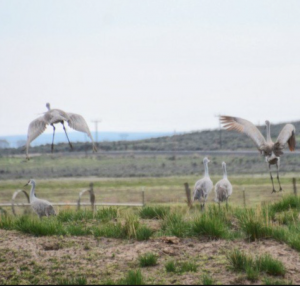
Wendy Willis, founder and director of Oregon’s Kitchen Table, poet and essayist, talks about her various roles as a public practitioner, the relationship between artist and political organizer, and the ways in which artists can serve the community through participatory projects.
The full conversation can be heard here.
Each week, students in the PSU Art and Social Practice Program invite members of the community into the classroom for a public conversation. The topics discussed vary widely, ranging from ecology, to urban planning, to activism, to just about anything.
PSST: Linda K. Johnson
Text by Portland State Social Practice Talks
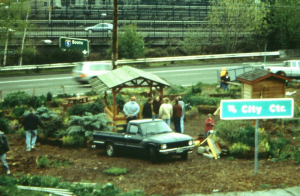
Artist Linda K. Johnson talks with the program about some of here site-specific, socially engaged projects, as well as the changing art landscape in Portland, Oregon. Image from “TAXLOT #1S1E4ODD” a temporary urban garden the artist constructed from 2000-2001.
You can listen to the conversation here.
Each week, students in the PSU Art and Social Practice Program invite members of the community into the classroom for a public conversation. The topics discussed vary widely, ranging from ecology, to urban planning, to activism, to just about anything.
PSST: Sue Palmer
Text by Portland State Social Practice Talks
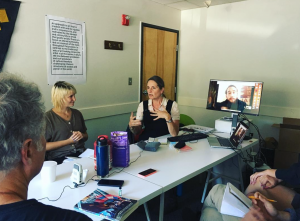
Artist Sue Palmer asks the group about their relationship to parks and public space. The conversation goes back and forth between her work here in the US, and the work of students in the program.
You can listen to the conversation here.
Each week, students in the PSU Art and Social Practice Program invite members of the community into the classroom for a public conversation. The topics discussed vary widely, ranging from ecology, to urban planning, to activism, to just about anything.

